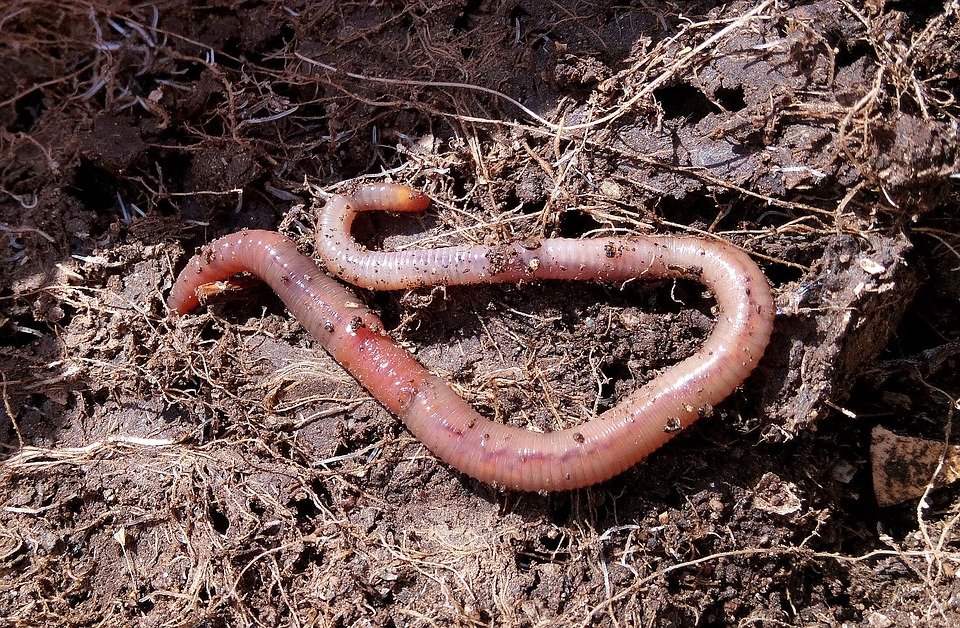I've just come across a great post by @theferalone about vermicomposting! That's perfect timing, as I was planning to do a post about our experience with red wrigglers. In a small condo, in a big city, on a micro balcony!
As I don't want to just repeat what's been very nicely explained in the post linked above, I'll assume you've already read the post. I also would like to apologize for the lack of photos, but unfortunately that part of our archive was lost!

The worm bin
As we researched our options, it became apparent that all ready-made bins are imported and super expensive around here (think a minimum monthly wage). So we had to make our own, a very simple one. We used two plastic buckets of about 2 gallons that fit inside each other. Those can be found for free (second hand), or bought very cheaply.
The bottom one collects the "soup" or "tea" as it is called - the liquid from the dissolving food scraps. After all, most fruits and vegetables have a high water content (the cucumber, as much as 95%!), so all this water has to go somewhere! This liquid has the tendency to get smelly fast, especially in the summer, so we emptied the bottom bucket almost daily.
The top one is where the worms live and where we dump our food scraps. It has holes drilled in the bottom, so the water can drip down. This bucket also has a lid to keep fruit flies and other insects out and potential smells - in.
After the top bucket fills up, we just scoop the top 10 cm (4 inches) of the contents - usually the freshest food scraps with the highest concentration of worms - and put it in another bucket with holes in the bottom.
The remaining material can be used right away in the garden, even if it's wet and sometimes will have bits and pieces in it. Drying it out and sieving it is much more time and space consuming than just dumping the bucket in a vegetable bed and spreading it on top.
The worm food
If you have the time & space & resources, it's best to make a large worm bed in the garden and just use that space as a general composter. However, at the time we had the red wrigglers, we did not even had a garden of our own! We lived in a urban condo with a small balcony.
At some time in the first year of having the worms, it became apparent that the scraps we put for them are too large. Before they started eating, it sometime took 2-3 weeks for the food to pre-de-compose (just made that term up!). It makes sense - in nature, plenty of other inhabitants of the soil and the surface layer process the organic matter before it becomes food for the worms.
The negative side effect of that was it took a whole summer to fill a bucket with worm castings, the process was very slow. We generated a lot more scraps than the worms could process, so their bucket sat full for long periods of time. And we had to throw away food scraps.
So what we did is a simple experiment. We blended all the scraps before putting them in the bucket. And we observed what happened daily. The difference was huge! The "scrap smoothies" as we used to call them were attracting the worms from day one!
The next thing was to get a very cheap second hand blender for a few bucks and just dedicate it to scrap smoothies. We'd stuff scraps in the blender all day and after dinner just blend the lot and pour it in the bucket.
This way, the worms worked much faster and by the time we filled the bucket to the top, the bottom part was already fully processed. Also, almost no bits and pieces of food were to be found in the finished product, except for eggshells.
Final thoughts
We've since moved on and a few years ago just let the whole population of our worms loose in the slow compost heap. By the looks of it, they still thrive in there! But I still wanted to share our experience, as I feel having a vermicompost system in the city is quite doable. What do you think?
The only real problem we've had was winter time, as we did not had a suitable place indoors to keep the worm buckets. If you do have such a location, your wrigglers can and will work the year around. Otherwise they just hibernate (or die, if temps are near freezing) and in spring from the pre-laid eggs hatch a whole new generation.
Thank you for reading! I'd like to wish you all a very happy, healthy and bountiful new year!
